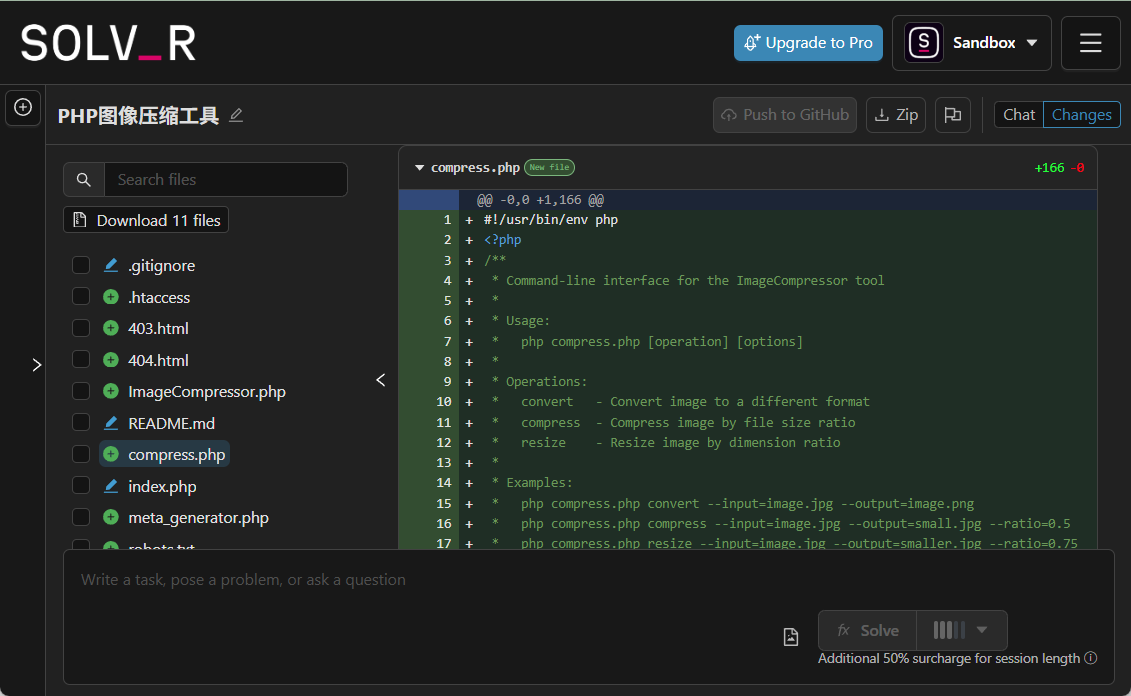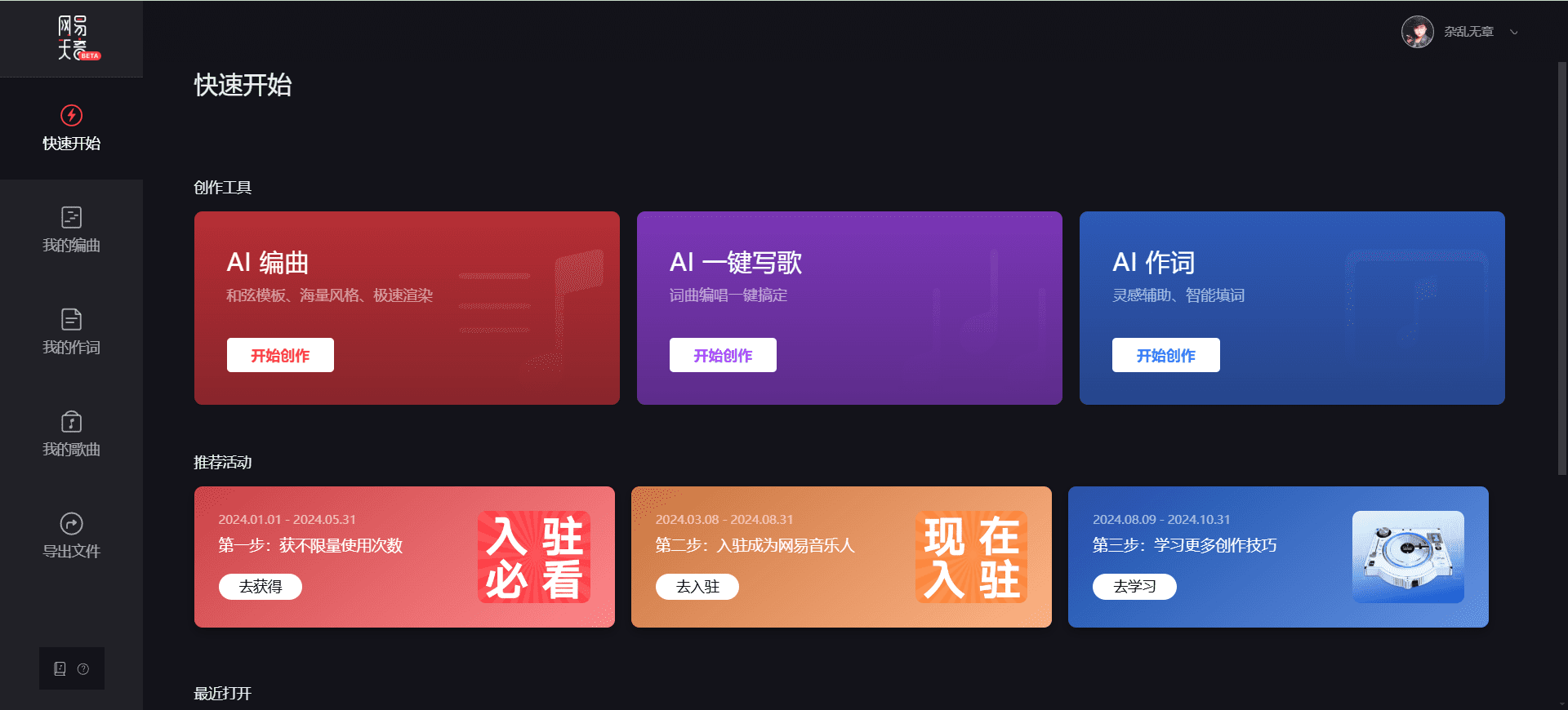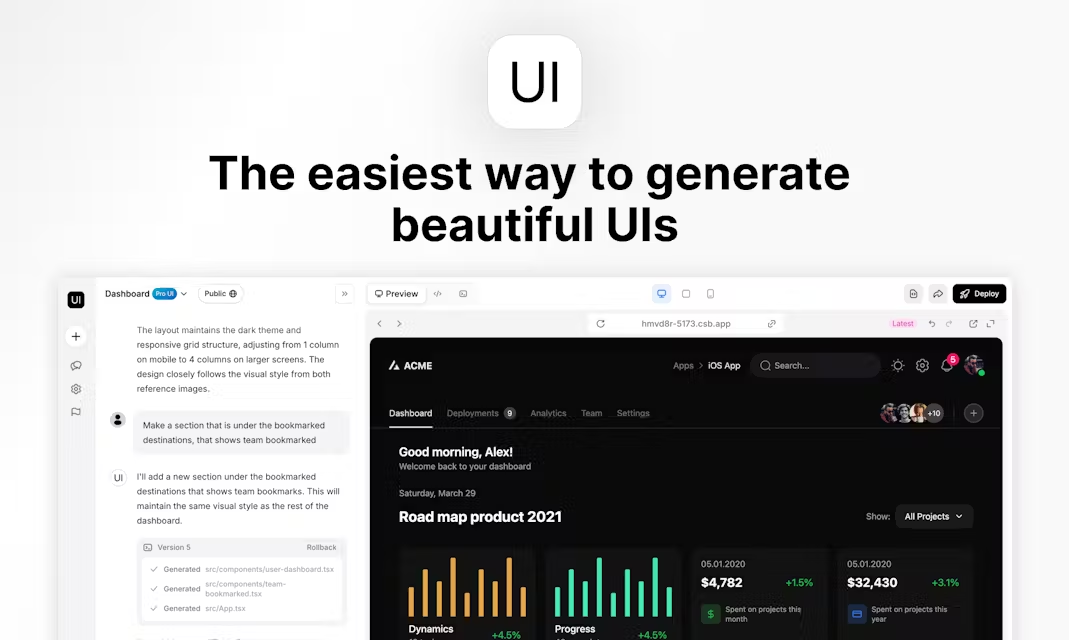Solver: the smart tool for autonomously completing programming tasks
General Introduction
Solver is a smart tool for completing programming tasks autonomously. Developed by a team of former engineering leaders at Apple and Samsung, its goal is to solve the task backlog problem faced by developers. The tool can independently handle a wide range of tasks in software development, from fixing bugs to developing new features, operating directly from your Git repository. Users simply describe their task requirements, and Solver AI automatically generates code and submits it for review. Instead of just offering suggestions, it takes over the entire development process, making it suitable for programmers, product managers, and even cross-disciplinary teams. Currently, it performs particularly well on Python and JavaScript/TypeScript, and also supports languages like Go and Rust.

Function List
- Autonomous Task Processing: Perform entire programming tasks independently based on natural language descriptions.
- Git Repository Operations: Create branches or submit pull requests directly in Git.
- code generation: Automatically write functional code, such as API endpoints or authentication modules.
- bug fix: Analyze error logs to locate and fix bugs.
- Test writing: Generate test code to ensure stable functionality.
- Project Initialization: Quickly build the code framework for a new project.
- Language Support: Specializing in Python, JavaScript/TypeScript, with support for Go, Rust, and more.
- Rapid Prototyping: Generate runnable prototype code in a short period of time.
Using Help
Solver requires no software installation and all operations are done through the website. Below is a detailed step-by-step description of its use and features to help users get started quickly.
How to get started
- Visit the official website: Open your browser and go to https://solverai.com/ or go directly to the application page at https://app.solverai.com/.
- Register for an account: Click on the "Sign Up" button and enter your e-mail address and password to complete your registration. New users will receive a few free credits.
- Login system: Log in with your registration information to access the task management interface.
- Checkpoints: Each task consumes a certain number of points, about 5-10 points for small tasks. If you don't have enough points, you can buy them on the website.
Main function operation flow
Autonomous Task Processing
- Step 1: Click "New Task" in the Tasks screen.
- Step 2: Describe requirements in natural language, such as "Add user login to my app" or "Fix a memory leak in this Python script".
- Step 3: Click "Submit" and Solver starts processing. After a few minutes, the result of the task is displayed as a code or Git commit.
- Results View: You can view the generated code or see the pull request directly in your Git repository.
Git Repository Operations
- Step 1: Connect to your Git repository in Settings, entering the repository URL and access rights (such as an SSH key or token).
- Step 2: Select "Create Pull Request" or "New Branch" when submitting a task.
- Step 3: When Solver AI completes a task, it automatically pushes the code to the specified repository. You can review it on GitHub or GitLab.
bug fix
- Step 1: State the problem in the task description, e.g. "Fix the asynchronous error in this JS file", and upload the error log or code.
- Step 2: Submit the task and Solver will analyze the problem and generate the fix code.
- typical example: If the log shows "undefined error", it will check the variable definition and fix it.
Test writing and project initialization
- Test writingSolver AI uploads existing code and selects "Write Tests" Solver AI generates test cases, for example using Python's
unittestThe - Project Initialization: Enter "Build a Flask project with REST API" and Solver AI will generate the complete code framework.
Featured Functions
Autonomous completion of the entire process
The best feature of Solver AI is its ability to perform development tasks independently. Users only need to describe the requirements, it will understand the requirements, write code, test the function, and finally submit the results. For example, if you type in "Implement a To-Do List backend", it will generate a database model, API routing and test code.
Language Support and Rapid Prototyping
- Language Support: Officially, it's particularly good at Python and JavaScript/TypeScript, and also supports Go and Rust; other languages can be handled as well, but may be slightly less efficient.
- Rapid Prototyping: Type "Build a front-end prototype with a login page" and you'll have working HTML and JS code in minutes.
Tips for use
- Be specific in your description: Writing "fix bugs" is not as effective as "fix crash due to null pointer".
- Save results: Download the code or confirm Git commits as soon as the task is completed.
- Feedback issuesIf the result is not satisfactory, you can contact the team through the "Support" section of the website.
With these features, Solver AI enables developers to free themselves from repetitive tasks and spend their time in more valuable ways.
application scenario
- Fixing legacy code
When bugs occur in older projects, upload code and logs and Solver AI can fix them quickly. - Rapid prototyping
When it's time to show off a product demo, Solver AI generates runnable code in minutes. - Team Assignment
The team handed off basic feature development to Solver AI, with members focusing on the core logic. - Learning and experimentation
Developers enter requirements, observe Solver AI's code implementation, and learn new methods.
QA
- Is Solver AI completely free?
There are free credits for signing up, but you will need to purchase more credits for continued use. - What languages are supported?
Specializes in Python, JavaScript/TypeScript, supports Go, Rust, and can handle other languages as well. - What if the mission fails?
Check the description for clarity, adjust and resubmit, or contact the support team. - Need a programming foundation?
Not necessary, just be able to describe the requirements in natural language.
© Copyright notes
Article copyright AI Sharing Circle All, please do not reproduce without permission.
Related posts

No comments...




